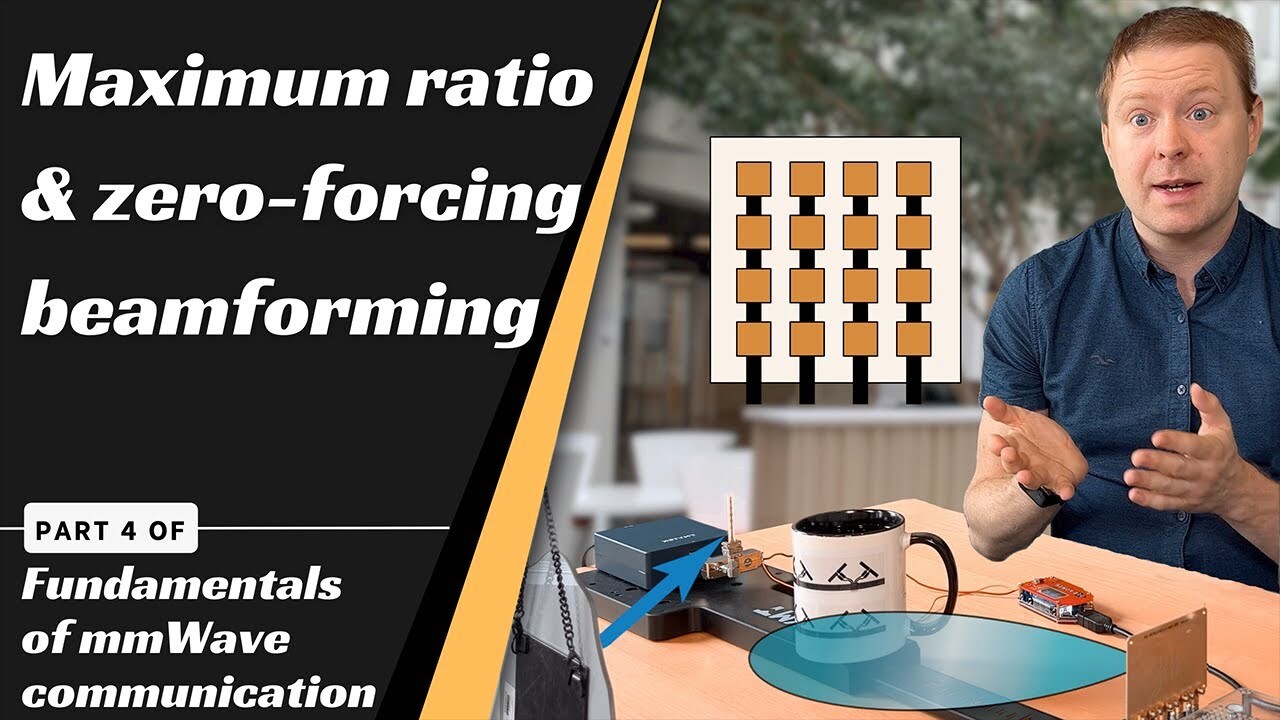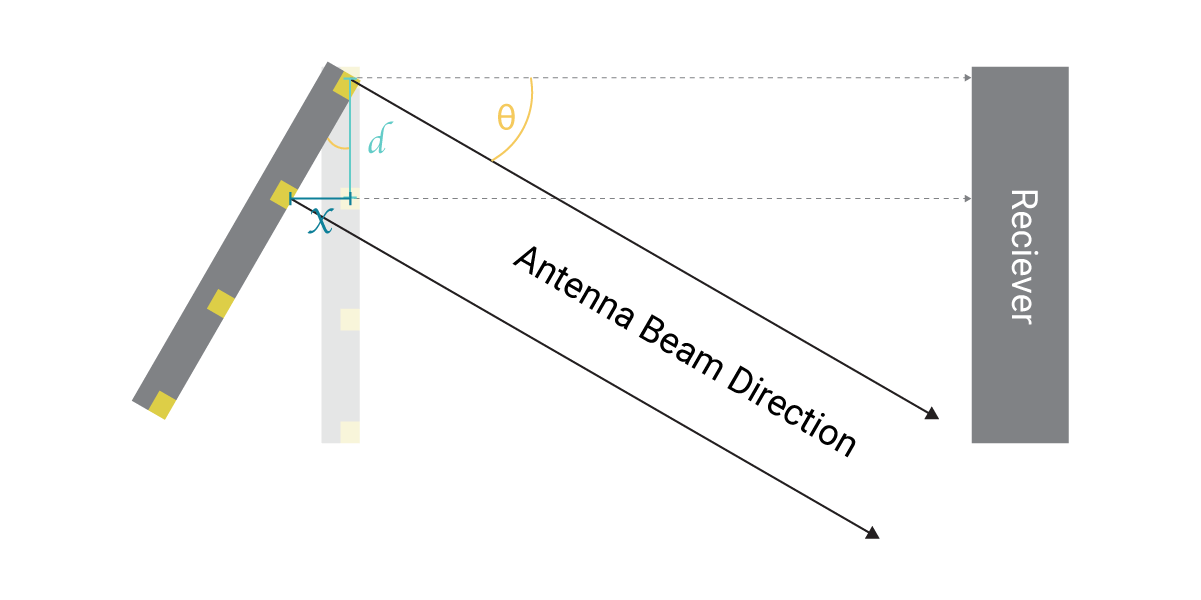Learn Beam Steering: Maximize SNR and Minimize Interference by Phase Shifting Fundamentals with Prof. Emil Björnson's Insightful Video Series

Introduction:
This blog post will explain what beam steering is, why it's essential, and how adjusting steps known as phase shifting can lead to optimal results. We will also talk about the relationship between millimeter-wave technology and beam steering, and how it enables us to minimize interference and maximize signal-to-noise ratio (SNR).
This blog is the fourth in a series covering mmWave communication fundamentals. In case you missed our previous article on constructive and destructive interference, please visit the following link: https://www.tmytek.com/company/news-events/72
Why Learn Beam Steering?
Beam steering is crucial in millimeter-wave bands to overcome high path loss. It involves controlling the direction of the beam by adjusting the signal phases of multiple antennas. This technology optimizes signal-to-noise ratio (SNR), reduces interference, and increases data transmission capacity by precisely directing radio waves towards individual users or devices.
With beam steering, we are able to:
Enhance Communication Quality:
The beam is steered to aim in the direction of the recipients, ensuring high-quality signals that boost throughput and improve user experiences.
Reduce Signal Interference: Beam steering can create a null to effectively minimize signal interference, reducing unwanted signal overlaps and disruptions for interference-free communication.
Accommodate Versatile Communication Environments: Beam steering enables effective communication in various environments. Under line-of-sight (LOS) conditions, it ensures direct, unobstructed communication. In non-line-of-sight (NLOS) scenarios, where obstacles may interfere, the adaptability provided by beam steering helps navigate around such obstacles, ensuring reliable communication, even in challenging conditions.
Video Experiment
In the video, Prof. Björnson explores the practical applications of and calculation methods for beam steering. He demonstrates over-the-air transmission of a mmWave signal and explains how to control the direction of signal transmission by phase-shifting the transmitted signals from different antennas to maximize SNR and minimize interference.
Beam Steering in Practice
The phase shift equation described below can be utilized to design a beam. In this particular episode, Porf. Bjornson utilized this equation to mitigate 30-degree physical rotation by adjusting the phases of each element on the BBoard.
Phase Shift Equation
Given that we have an array antenna with element spacing d , we want to design a beam with the direction as shown in Figure 1.
 Image 1: Beam steering by phase shifters
Image 1: Beam steering by phase shifters
The beam steering equation is thus as follows:
Assuming the 28 GHz transmitter has been rotated to 30 degrees and the distance between each antenna element of the transmitter is 5 mm, we can calculate the result below.

Beam Sweeping
In practice, however, we likely will not have prior knowledge of the receiver's location or the optimal beam angle. Therefore, beam sweeping is necessary to determine the direction that provides the strongest signal to the receiver.
 Image 2: Beam sweeping experiment (screenshot from Prof. Björnson’s video)
Image 2: Beam sweeping experiment (screenshot from Prof. Björnson’s video)
Professor Björnson conducted an experiment by incrementally adjusting the phase steps and observing the peaks and troughs of the signal power, as well as the noise floor. Eventually, he identified the desired direction when the signal power reached its maximum level.
Zero-forcing vs. Maximum Ratio Beamforming
 Image 3: Maximum ratio beamforming vs zero-forcing beamforming
Image 3: Maximum ratio beamforming vs zero-forcing beamforming
In certain situations, we may want to control directivity in order to adjust the signal's power. Maximum ratio beamforming maximizes the signal strength at the receiver to support higher data speeds; zero-forcing beamforming minimizes the signal strength to shield undesired receivers from disruptions.
Line-of-sight and Non-line-of-sight Communication
 Image 4: Line-of-sight vs non-line-of-sight
Image 4: Line-of-sight vs non-line-of-sight
"Line-of-sight" (LOS) communication refers to the optimal scenario where each antenna transmits the same signal to the receiver with consistent phase alignment.
However, real-world communication environments often do not allow for LOS scenarios. When obstacles obstruct the direct path between the transmitter and receiver, this is known as "non-line-of-sight" (NLOS) communication. In such situations, innovative technologies such as beam steering and reconfigurable intelligent surface (RIS) play a critical role in enabling effective communication.
 Image 5: Non-line-of-sight communication issues can be resolved by reflectors, which can reflect the signal so that Rx can receive it.
Image 5: Non-line-of-sight communication issues can be resolved by reflectors, which can reflect the signal so that Rx can receive it.
By introducing adaptability to avoid obstacles, beam steering and RIS technologies prove invaluable in NLOS scenarios. When a direct transmission path is obstructed, changing the phase shifts of the signal and redirecting it to a reflector become transformative strategies. This innovative redirection not only gets around the obstacle, but it also uses the reflector as a means to get the signal to the receiver. These overcome the inherent challenges of fragile mmWaves.
➭ Visit mmW-Coverage to learn about TMYTEK’s passive RIS reflector
Conclusion
In conclusion, the application of beam steering technology in wireless communication is critical for optimizing communication performance. It enables us to achieve optimal SNR by adjusting the transmission direction of the signal, reducing signal interference, and stabilizing communication. This technology is critical for the success of emerging communication technologies such as millimeter-wave communication and offers limitless possibilities for wireless communication in the future.
Understanding how to adjust phase differences for optimal performance can thus improve communication quality and increase connection stability. Beam steering is an essential technology worth investigating to fully realize the potential of mmWave communication.
